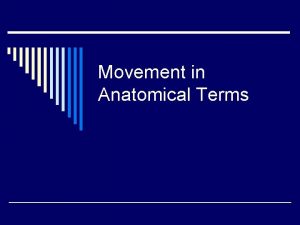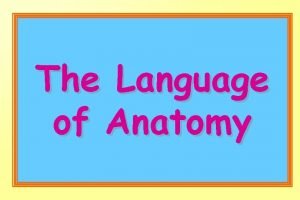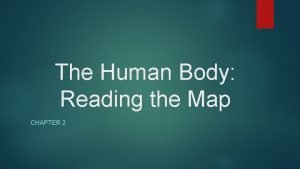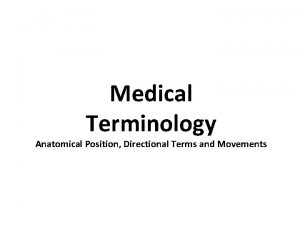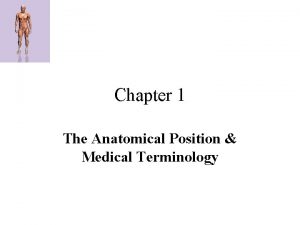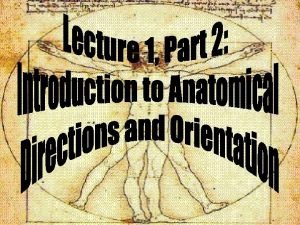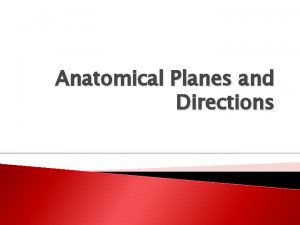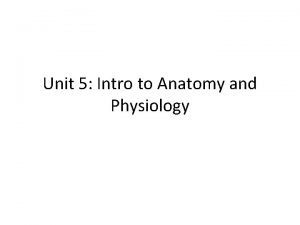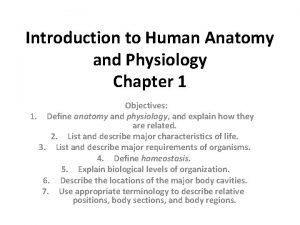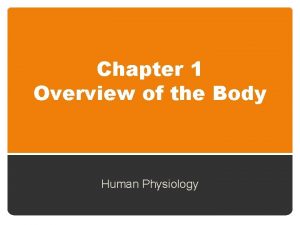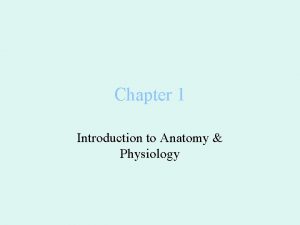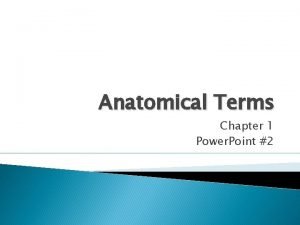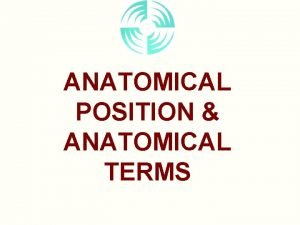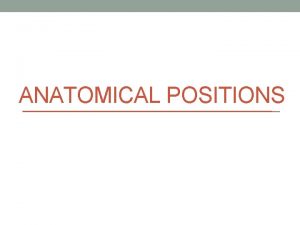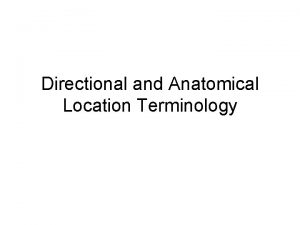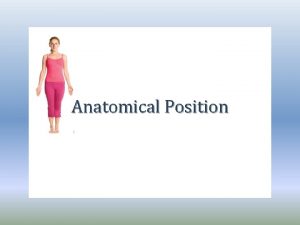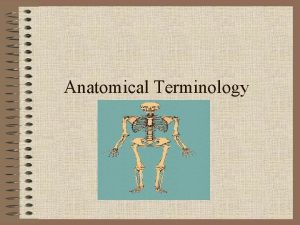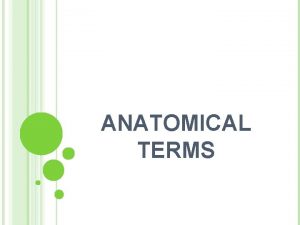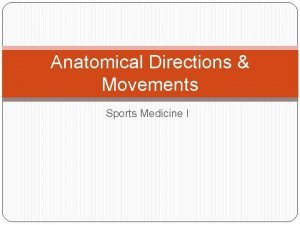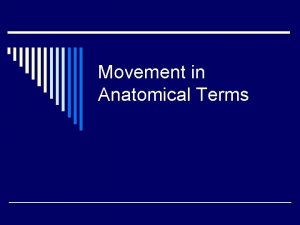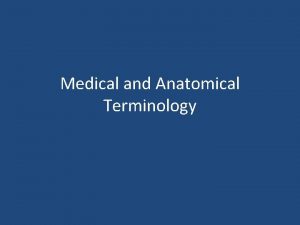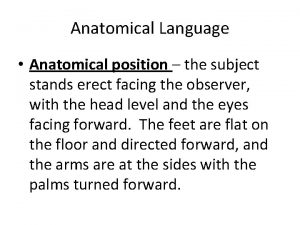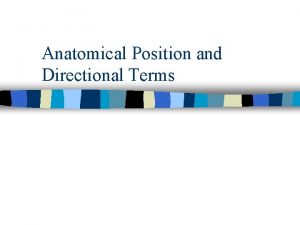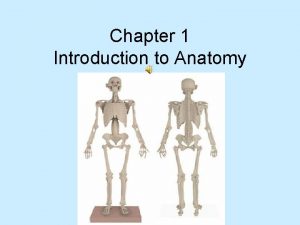Introduction to Anatomy Chapter 3 ANATOMICAL POSITION 3
















- Slides: 16

Introduction to Anatomy Chapter 3

ANATOMICAL POSITION 3 Planes of the body: 1. Frontal (Coronal) 2. Sagittal (Vertical) 3. Transverse (Horizontal)

Reference Terms 1. Anterior and posterior 2. Medial and lateral 3. Proximal and distal

Reference Terms 1. Superior and inferior 2. Dorsal and ventral (hand foot) 3. Superficial and deep


MOVEMENTS 1. Flexion and Extension 2. Abduction and Adduction

Pronation and Supination

4. Inversion and Eversion (foot) 5. Protraction and Retraction (Jaw and shoulder blades)

6. Rotation (head) 7. Circumduction (shoulder or hip)

BONES Purpose? How many? Categories? 1. Axial skeleton 2. Appendicular skeleton

Bones Long-femur Short-metacarpal Flat-scapula Irregular-vertebra Epiphysis—Growth Plate

Cartilage 1. Location: A. Covers the ends of bones. (Articular Cartilage) B. Between bones Hyaline (Cartilage) 2. Functions A. Joins structures B. Absorb shock C. Permit smooth bone movement

JOINTS A. Diarthrodial (synovial): Great mobility Hinge or multiaxial joints (ball & socket) Synovial membrane Hyaline cartilage B. Amphiarthodial: Cartilage attaching two bones together (cartilaginous joints) C. Synarthrodial: Fibrous joints – held together by tough connective tissue.

6 types of joints Hinge-permit motion in 1 plane (knee, elbow) Saddle Joint-the joint is shaped like a saddle and rider (carpometacarpal joint-thumb) Ball and Socket-made up of a spherical shape and the other of a cup-like socket (hip, shoulder) Gliding joint-allows joint to glide in any direction (carpals of hands) Pivot joint-central bony cylinder with a ring like structure (proximal joint of radius and ulna) Condyloid-Oval articular surface of one bone fits into a complementary depression (

Tendons and Ligaments TENDON: Attach muscle to bone. LIGAMENT: Connects bone to bone (forms joints)

SKIN First line of defense. Layers: 1. Epidermis – most superficial 2. Dermis – next layer in 3. Hypodermis – holds the skin to the bone and muscle.
 Fundamental position vs anatomical position
Fundamental position vs anatomical position Russian ballet terms
Russian ballet terms What does erect mean in anatomy
What does erect mean in anatomy Anatomical position supine
Anatomical position supine Medical term for right arm
Medical term for right arm Positional terms anatomy
Positional terms anatomy Anatomical position medical terminology
Anatomical position medical terminology Palms facing anteriorly
Palms facing anteriorly Transverse plane definition anatomy
Transverse plane definition anatomy Body planes and axes
Body planes and axes Standing position medical term
Standing position medical term Definition of homeostasis
Definition of homeostasis Midline vs medial
Midline vs medial Anatomical position woman
Anatomical position woman Anatomical position
Anatomical position Cross section of abdomen
Cross section of abdomen Chapter 1 introduction to human anatomy and physiology
Chapter 1 introduction to human anatomy and physiology
